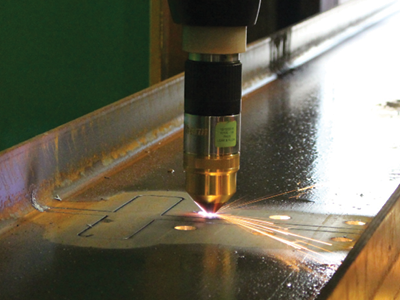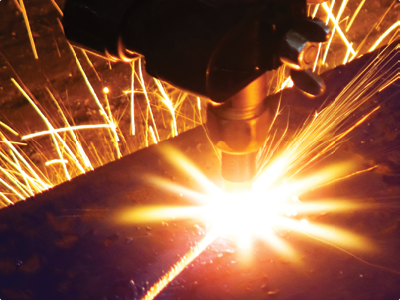6 Tips for Improving Your Plasma Cut Quality
While plasma cutting systems are generally user-friendly machines, experience will show that there’s more to it than meets the eye. After learning the basics of plasma cutting, there’s still more to learn – such as improving cut quality, prolonging consumable life and improving efficiency.
Whether your plasma cutter will be used in the shop or for DIY projects, arts, motorsports or even heavy-fabrication, here are some tips and suggestions for best practices that will increase your efficiency and precision and prolong the life of your plasma cutting system and consumables.
Tip 1: Choose the right plasma cutter 
There are a number of factors to consider when purchasing a plasma cutting system, including cut capacity, duty cycle, purchase cost and operating costs. Think about the jobs you will do most often when selecting your machine and choose one that appropriately suits your needs.
Here are some questions you might need to ask yourself to help narrow down the kind of plasma cutter you’re looking for:
- Do you plan to cut by hand or on a table?
- Do you need the unit to be portable?
- How often will you be using your plasma cutter?
- What kind of material do you plan to cut?
- What’s your budget?
- Will you use a generator or local power outlets to power your machine?
Tip 2: Set up your machine properly
Because the cutting process is based on an electrical charge that melts the surface of the metal, a ground clamp is necessary for protecting the user and the plasma cutter unit. When setting up your plasma cutting machine, secure the ground clamp to clean metal only. If necessary, grind off rust or paint, as either can disrupt the flow of electricity. It’s also essential to place the clamp as close to the cut area as possible.
It is also important to frequently check worn spots, cables for loose connections, or anything that might inhibit the electrical flow.
Finally, for getting efficient cutting results, it is important to use the correct tip for amperage setting. Using the right tip will help you to save time and money.
Tip 3: Practice your cut 
The first cut is important for any cutting project. Without pulling the trigger, trace the path you plan to cut. Practice your movements to make sure you have enough freedom of movement to make one continuous cut, as stopping and starting again in the same spot can create irregularities in the cut edge.
You can also make a sample cut on the same type of material with which you’ll be working. This helps ensure you’re using the right settings and travel speed.
Tip 4: Watch the travel speed
The faster your travel speed (especially on aluminum), the cleaner your cut will be. If during your practice cut, or during the actual work, you see sparks shooting along the top of the metal, you are going too fast and need to slow down. When the travel speed is correct, you will see the arc coming out at about a 20-degree angle, opposite the direction of the torch’s travel path.
Traveling at the right speed and using the right amount of heat will produce a very clean cut with less dross on the bottom of the cut and little or no distortion to the metal.
Tip 4: Brace yourself
Use a drag shield if your machine is equipped with one. This allows you to rest the torch on the workpiece while maintaining an optimal standoff without touching the tip to the metal, which can adversely affect cut quality and consumable life.
If you're not using a drag shield, or are trying to make very precise cuts, place your noncutting hand down and use it as a guide for the other hand. This rest hand position allows freedom of movement in all directions while helping you steady your hand and maintain a constant standoff.
Tip 5: Check your consumables
Using worn consumables is a common mistake when it comes to plasma cutting. It can not only ruin a good piece of metal but can also cause torch failure, resulting in unnecessary downtime and reduced productivity.
There are several ways to identify worn consumables. For example, a skilled operator can identify this by noting the subtle changes in the torch height or the sound of the arc.
It will also help if you maintain a record of average part life over time. This will allow you to establish a guideline for checking and replacing the consumables.
Contact Linde to optimize your plasma cutting




























